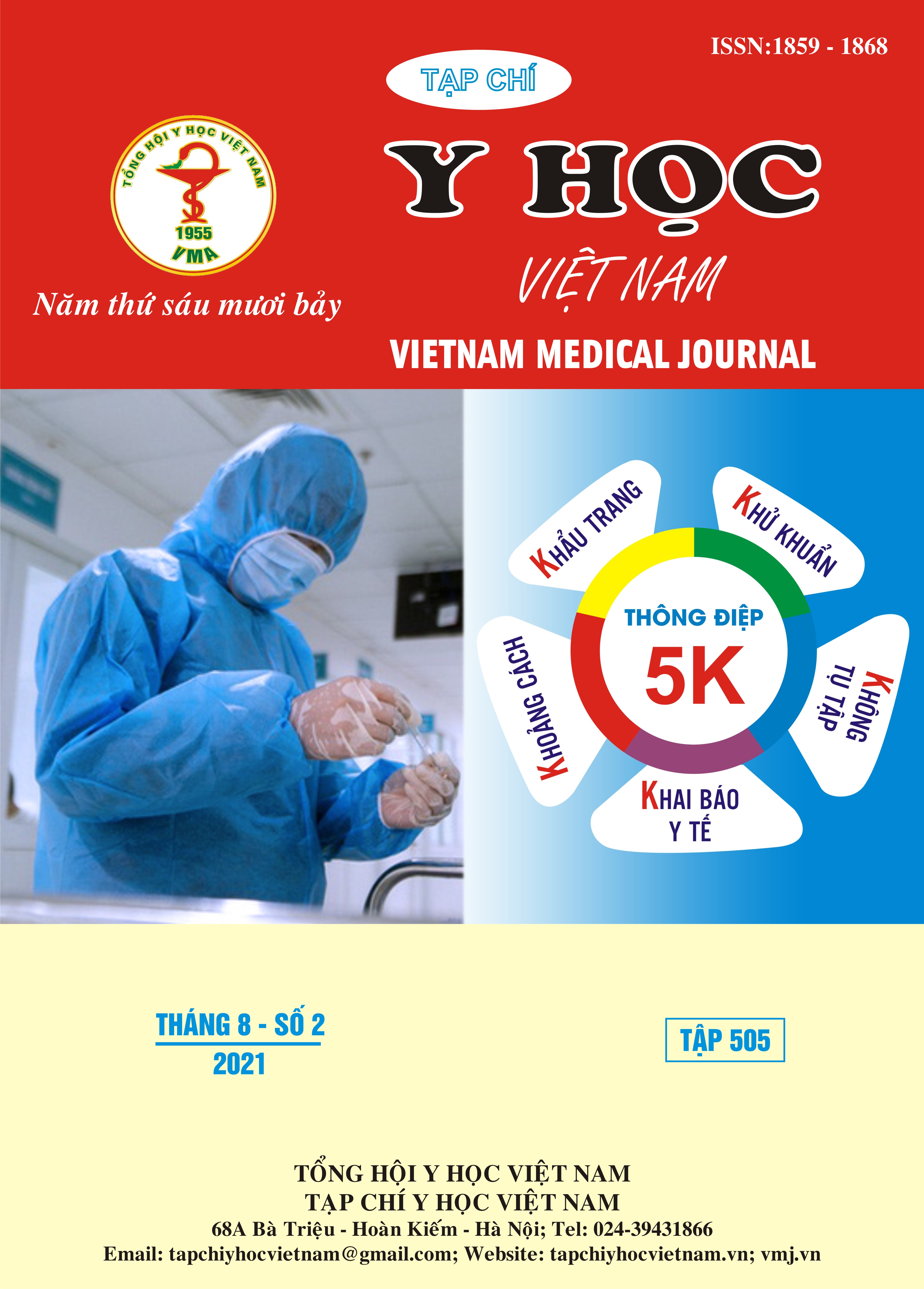A VIETNAMESE GIRL WITH MUTATION OF THE UROPORPHYRINOGEN III COSYNTHASE GENE: CONGENITAL ERYTHROPOIETIC PORPHYRIA
Main Article Content
Abstract
Background: Congenital erythropoietic porphyria (CEP) arises from an autosomal recessive inherited disorder of the porphyrin metabolism, which leads to the accumulation of uroporphyrinogen I in bone marrow, skin and several other tissues by a deficiency of uroporphyrinogen III cosynthase (UROS). Case report: To describe clinical feature and gene mutation in a patient treated at National Hospital of Dermatology and Venereology. A five-year-old Vietnamese girl suffering from severe cutaneous photosensitivity with skin fragility, bullous lesions and hypertrichosis on light-exposed areas. We described for the first time a mutation in the UROS gene in a Southeast Asian patient and a molecular diagnosis for the identification of clinically asymptomatic heterozygous mutation carriers and families with CEP. To clarify the first molecular basis of Vietnamese family, identification of UROS mutation, and measurement activity of uroporphyrinogen III cosynthase in a patient with CEP were performed. A missense mutation in the UROS gene was identified as a transversion of G to T at nucleotide 11,776, resulting in a substitution of valine by phenylalanine at codon 3 of exon 2. The patient showed a homozygous mutant profile, and the heterozygous state was observed in the parents. The activity of mutated UROS expressed in Escherichia coli was less than 16.1% that of the control, indicating that the markedly reduced activity of UROS from genetic mutation is responsible for CEP. Conclusions: The mutational analysis of gene causing CEP is important in the patient’s disease management. Genetic counseling of the family and prenatal diagnosis is strongly recommended in this rare disease.
Article Details
Keywords
Congenital erythropoietic porphyria, Uroporphyrinogen III cosynthase, Deficiency, Photosensitivity, Mutation
References
2. Desnick RJ, Astrin KH (2002). Congenital erythropoietic porphyria: advances in pathogenesis and treatment. Br J Haematol, 117:779–795.
3. Katugampola RP, Anstey AV, Finlay AY, Whatley S, Woolf J, Mason N, Deybach JC, Puy H, Ged C, de Verneuil H, Hanneken S, Minder E, Schneider-Yin X, Badminton MN (2012). A management algorithm for congenital erythropoietic porphyria derived from a study of 29 cases. Br J Dermatol, 167:888–900.
4. Maniangatt, S.C. et al (2004). A rare case of porphyria. Ann Acad Med Singapore,33(3): p. 359-61.
5. Mathews MA, Schubert HL, Whitby FG, Alexander KJ, Schadick K, Bergonia HA, Phillips JD, Hill CP (2001). Crystal structure of human uroporphyrinogen III synthase. EMBO J, 20:5832–5839.
6. Mazurier F, Géronimi F, Lamrissi-Garcia I, Morel C, Richard E, Ged C, Fontanellas A, Moreau-Gaudry F, Morey M, de Verneuil H (2001). Correction of deficient CD34+ cells from peripheral blood after mobilization in a patient with congenital erythropoietic porphyria. Mol Ther, 3:411–417.
7. Moghbeli M, Maleknejad M, Arabi A, Abbaszadegan MR (2012). Mutational analysis of uroporphyrinogen III cosynthase gene in Iranian families with congenital erythropoietic porphyria. Mol Biol Rep, 39:6731–6735.
8. Ohgari Y, Sawamoto M, Yamamoto M, Kohno H, Taketani S (2005). Ferrochelatase consisting of wild-type and mutated subunits from patients with a dominant-inherited disease, erythropoietic protoporphyria, is an active but unstable dimer. Hum Mol Genet, 14:327–334.
9. Takamura N, Hombrados I, Tanigawa K, Namba H, Nagayama Y, de Verneuil H, Yamashita S (1997). Novel point mutation in the uroporphyrinogen III synthase gene causes congenital erythropoietic porphyria of a Japanese family. Am J Med Genet, 70:299–302.
10. Wiederholt T, Poblete-Gutiérrez P, Gardlo K, Goerz G, Bolsen K, Merk HF, Frank J (2006). Identification of mutations in the uroporphyrinogen III cosynthase gene in German patients with congenital erythropoietic porphyria. Physiol Res, 55(suppl 2): S85–S92.


